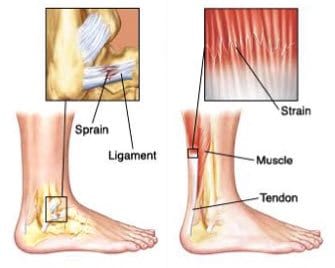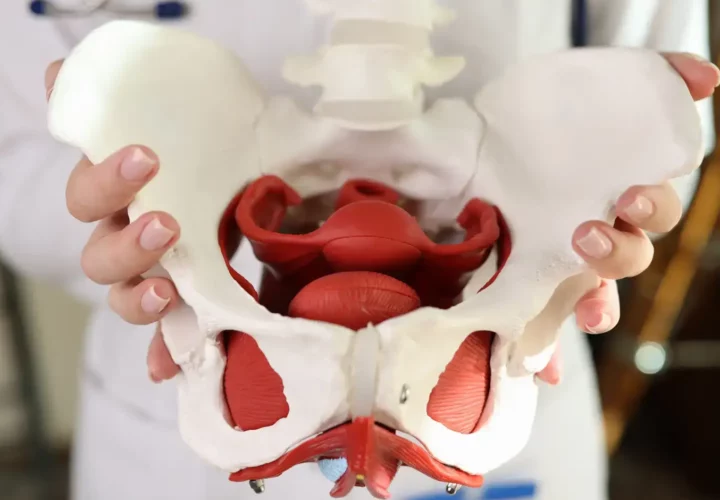There are so many ways you can injure yourself. You may sprain or strain a muscle or ligament in your body. But what really is the difference between sprains and strains?
Straining a Muscle/Tendon
A muscle strain is also referred to as a pulled muscle. This occurs when the muscle/tendon is either torn or over stretched resulting from fatigue, overuse, or improper use of the muscle. Any muscle can be strained, but most commonly occurs in the lower back, neck, shoulders, and hamstring. Pain can be caused from a strain and may limit movement.
Acute and Chronic Strains
Acute muscle strains happen when the muscle tears suddenly or unexpectedly. These tears can occur from injuries or trauma and may be due to poor flexibility, overexertion and fatigue, poor conditioning, and not warming up properly before exercise. Acute strains have been seen to happen when jumping, running, throwing an object, slipping/losing your footing, lifting something heavy, or lifting something in an awkward position. Because your muscles are more stiff in cooler weather, this is the more common time when acute strains occur. 
Chronic strains are the resultant of repetitive movement. They can occur due to activities such as rowing, tennis, golf, or baseball. Other ways chronic strains can occur are from poor posture and holding your back/neck in awkward positions for longer periods of time (working at a desk).
Spraining a Ligament
A sprain occurs when a ligament is either stretched too far or tears. Typically sprains occur when a person falls, twists, or is hit in a way that forces their body out of its normal position. About 25,000 people sprain an ankle everyday, making this the most common type of sprain. Another common type is a sprained wrist or thumb. Stretching regularly and strengthening exercises can help minimize your risk of a sprain.
Some signs and symptoms of a sprain include pain, swelling, perhaps some bruising, loss of ability to move and use the joint. Depending on the severity of your sprain, the intensity of your symptoms can vary. Some doctors may use a grading system to help diagnose the severity of your pain too. Grade one or a mild sprain may just have slight over-stretching or a slight tear of the ligament. A grade two or moderate sprain has partial tearing of the ligament. This grade is characterized by bruising, moderate pain, and swelling. Lastly, a grade three. This is a severe sprain with a completely torn or ruptured ligament. More than likely, the pain, swelling, and bruising are very severe and the person will not be able to put any weight on the affected area.
The Difference
So you’re probably thinking they’re the exact same thing, which makes sense. They both have similar signs and symptoms along with the the same overall treatment. However, there are some differences. The main difference is a sprain occurs when a ligament is stretched too far/tears and a strain is when a muscle/tendon is torn or over stretched. Also, with sprains you may have bruising around the affected joint, but with strains the affected muscle may have spasms.
It can be pretty confusing, but knowing sprains go with ligaments and strains go with muscles/tendons might help you in the long run.



